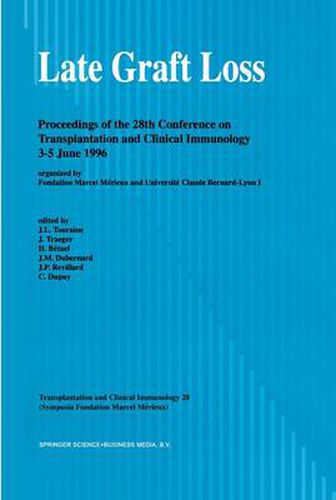Readings Newsletter
Become a Readings Member to make your shopping experience even easier.
Sign in or sign up for free!
You’re not far away from qualifying for FREE standard shipping within Australia
You’ve qualified for FREE standard shipping within Australia
The cart is loading…






This title is printed to order. This book may have been self-published. If so, we cannot guarantee the quality of the content. In the main most books will have gone through the editing process however some may not. We therefore suggest that you be aware of this before ordering this book. If in doubt check either the author or publisher’s details as we are unable to accept any returns unless they are faulty. Please contact us if you have any questions.
In all varieties of organ transplants, early results have dramatically improved over the past two decades and failures due to acute rejection are becoming rarer. Efficient immunosuppressive regimens have been developed with the objective of very good results at 1, 3 and 5 years.
Successful transplants, however, are significantly less frequent at 10 and 20 years, and many patients require retransplantation. Many factors are involved in late graft loss and it is now well recognized that, in addition to chronic rejection, a number of non-immunologic factors play a prominent role. In the case of renal transplantation, a reduced mass loss (transplantation of a single kidney, sometimes from an aged donor, ischemic injury and alteration of some nephrons in the case of early acute rejection) will result in slowly progressing chronic renal failure, even in the absence of any supplementary attack of an immunological nature. The new treatments must be analyzed in the light of their capacity to reduce these late failures. Several preventive measures can also limit both immunologic and non-immunologic factors of late transplant deterioration.
$9.00 standard shipping within Australia
FREE standard shipping within Australia for orders over $100.00
Express & International shipping calculated at checkout
This title is printed to order. This book may have been self-published. If so, we cannot guarantee the quality of the content. In the main most books will have gone through the editing process however some may not. We therefore suggest that you be aware of this before ordering this book. If in doubt check either the author or publisher’s details as we are unable to accept any returns unless they are faulty. Please contact us if you have any questions.
In all varieties of organ transplants, early results have dramatically improved over the past two decades and failures due to acute rejection are becoming rarer. Efficient immunosuppressive regimens have been developed with the objective of very good results at 1, 3 and 5 years.
Successful transplants, however, are significantly less frequent at 10 and 20 years, and many patients require retransplantation. Many factors are involved in late graft loss and it is now well recognized that, in addition to chronic rejection, a number of non-immunologic factors play a prominent role. In the case of renal transplantation, a reduced mass loss (transplantation of a single kidney, sometimes from an aged donor, ischemic injury and alteration of some nephrons in the case of early acute rejection) will result in slowly progressing chronic renal failure, even in the absence of any supplementary attack of an immunological nature. The new treatments must be analyzed in the light of their capacity to reduce these late failures. Several preventive measures can also limit both immunologic and non-immunologic factors of late transplant deterioration.